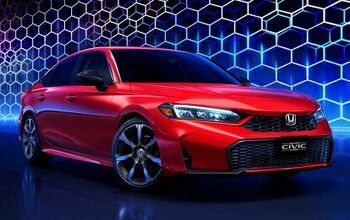America (Not) First: Ford Mustang Mach-E Lands in Europe Ahead of U.S. Arrival

First, but not by far. In a Q&A with Jason Mase, Ford Electrification Marketing Strategy head, a Mach-E Club forum poster revealed that European reservation holders will be first to see the second member of the Mustang “family.”
The electric crossover with the pony badge is still on track to land in the U.S. before the end of the year, with Ford anticipating deliveries in all 50 states by the end of the fourth quarter of 2020. Of course, that doesn’t apply to all trims.
Models arriving before the end of 2020 include the obvious First Edition, along with upscale Premium, downmarket Select, and the annoyingly named California Route 1 model. Powertrains differ among the four, with the Select serving as the bottom-rung offering. Only the standard battery can be found in that model, though it still offers the choice of all-wheel drive/twin-motor capability. The California Route 1 model arrives with the extended-range battery and rear-drive, affording it the Mach-E’s maximum range of 300 miles.
Buyers looking for a GT will have to wait until late spring or summer of 2021 for their performance-wrapped EV. That model makes 459 horsepower and 612 lb-ft of torque, with standard AWD and an extended-range battery pushing its pre-tax credit price north of $60k.
According to Mase, reservation holders will be contacted soon to configure their car and turn the reservation into an order. He added that Ford is working on a “lease-type product” that allows Mach-E intenders to claim the $7,500 federal tax credit.
“We’re looking at a product that behaves a lot like a lease but allows the customer to decide if they want to claim the tax incentive and decide if they want to put it into the monthly payment or take that tax incentive later and use it for something else,” Mase said. “When you do a lease you normally sign it right into the deal, we’ll do something that allows you to claim it later on your taxes.”
While the Environmental Protection Agency has yet to rate the Mach-E, Mase says Ford is confident its estimates will carry over into reality. That means no less than 210 miles of range, depending on configuration, with 300 miles on the top end.
[Images: Ford]

More by Steph Willems
Latest Car Reviews
Read moreLatest Product Reviews
Read moreRecent Comments
- V8fairy Not scared, but I would be reluctant to put my trust in it. The technology is just not quite there yet
- V8fairy Headlights that switch on/off with the ignition - similar to the requirement that Sweden has- lights must run any time the car is on.Definitely knobs and buttons, touchscreens should only be for navigation and phone mirroring and configuration of non essential items like stereo balance/ fade etc>Bagpipes for following too close.A following distance warning system - I'd be happy to see made mandatory. And bagpipes would be a good choice for this, so hard to put up with!ABS probably should be a mandatory requirementI personally would like to have blind spot monitoring, although should absolutely NOT be mandatory. Is there a blind spot monitoring kit that could be rerofitted to a 1980 Cadillac?
- IBx1 A manual transmission
- Bd2 All these inane posts (often referencing Hyundai, Kia) the past week are by "Anal" who has been using my handle, so just ignore them...
- 3-On-The-Tree I was disappointed that when I bought my 2002 Suzuki GSX1300R that the Europeans put a mandatory speed limiter on it from 197mph down to 186mph for the 2002 year U.S models.



































Comments
Join the conversation
I don't know why there is all this hate about the Mustang Mach-E. It looks like a competitive product and doing a limited launch in Europe seems like a good idea to iron out any early bugs before full scale production. You have to admit it's a much better car than the Mustang II. I remember when that came out and everyone thought that was the end of the pony car. Everyone was wrong.
Does anyone else think that Ford intends to eventually replace the beloved four-seat performance coupe and convertible they now manufacture with this glorified Edge or Escape?